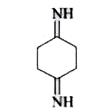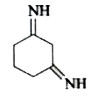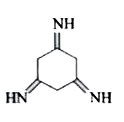Which of the following oxide is least stable?
CO2
CO
MgO
HgO
The correct Answer is:D
To determine which of the following oxides is the least stable, we will analyze each option provided:
1. CO2 (Carbon Dioxide):
- Carbon dioxide is a well-known stable compound. Carbon can form stable bonds with oxygen in this molecule, and it is commonly found in nature. Therefore, CO2 is a stable oxide.
2. CO (Carbon Monoxide):
- Carbon monoxide is another stable oxide of carbon. Although it is less stable than CO2 due to its tendency to react with oxygen to form CO2, it is still considered stable under normal conditions.
3. MgO (Magnesium Oxide):
- Magnesium oxide is formed when magnesium reacts with oxygen. Magnesium has a stable oxidation state of +2, and oxygen has a -2 charge in this compound. The ionic bond formed between Mg and O is strong, making MgO a very stable oxide.
4. HgO (Mercuric Oxide):
- Mercuric oxide can exist in two oxidation states: +1 and +2. The most stable oxidation state of mercury is +1, but in HgO, mercury is in the +2 oxidation state. This makes HgO less stable compared to the other oxides listed because it does not favor the +2 state as much as the +1 state.
Conclusion:
After analyzing all the options, we can conclude that the least stable oxide among the given options is HgO (Mercuric Oxide).
Final Answer: Option 4: HgO
---
- Carbon dioxide is a well-known stable compound. Carbon can form stable bonds with oxygen in this molecule, and it is commonly found in nature. Therefore, CO2 is a stable oxide.
- Carbon monoxide is another stable oxide of carbon. Although it is less stable than CO2 due to its tendency to react with oxygen to form CO2, it is still considered stable under normal conditions.
- Magnesium oxide is formed when magnesium reacts with oxygen. Magnesium has a stable oxidation state of +2, and oxygen has a -2 charge in this compound. The ionic bond formed between Mg and O is strong, making MgO a very stable oxide.
- Mercuric oxide can exist in two oxidation states: +1 and +2. The most stable oxidation state of mercury is +1, but in HgO, mercury is in the +2 oxidation state. This makes HgO less stable compared to the other oxides listed because it does not favor the +2 state as much as the +1 state.
After analyzing all the options, we can conclude that the least stable oxide among the given options is HgO (Mercuric Oxide).
Topper's Solved these Questions
- GENERAL PRINCIPLES AND PROCESSES OF ISOLATION OF ELEMENTSBOOK - AAKASH INSTITUTE ENGLISHCHAPTER - GENERAL PRINCIPLES AND PROCESSES OF ISOLATION OF ELEMENTSEXERCISE - Assignment (Section-D) Assertion-Reason Type Question
15 Videos
- GENERAL PRINCIPLES AND PROCESSES OF ISOLATION OF ELEMENTSBOOK - AAKASH INSTITUTE ENGLISHCHAPTER - GENERAL PRINCIPLES AND PROCESSES OF ISOLATION OF ELEMENTSEXERCISE - Assignment (Section-B) Objective type Question
25 Videos
- EQUILIBRIUMBOOK - AAKASH INSTITUTE ENGLISHCHAPTER - EQUILIBRIUMEXERCISE - ASSIGNMENT (SECTION -D)
20 Videos
- GENERAL PRINCIPLES AND PROCESSES OF ISOLATION OF ELEMENTSBOOK - AAKASH INSTITUTE ENGLISHCHAPTER - GENERAL PRINCIPLES AND PROCESSES OF ISOLATION OF ELEMENTSEXERCISE - Try Yourself
33 Videos
Similar Questions
Knowledge Check
Which of the following halides is least stable and has doubtful existence ?
ACCl4BSnl4CGel4DPbl4Which of the following species is least stable ?
ACH4BSiH4CSnH4DPbH4Which of the following is the least stable?
A B
B C
C D
D
